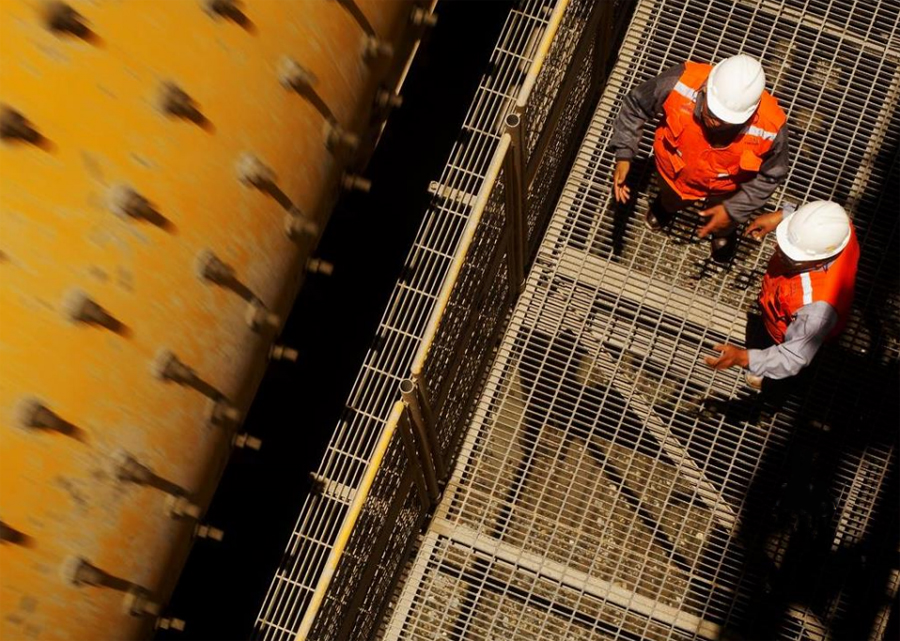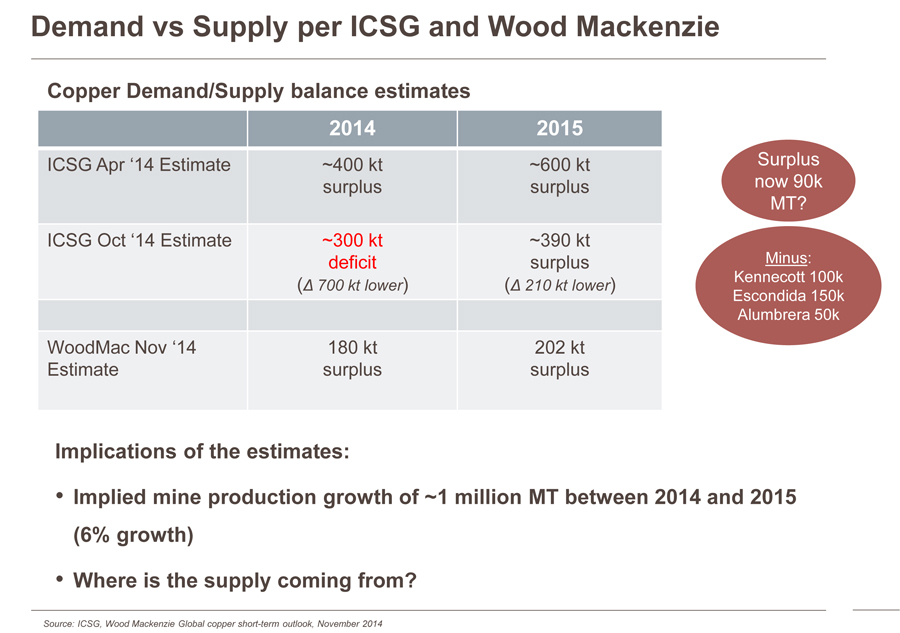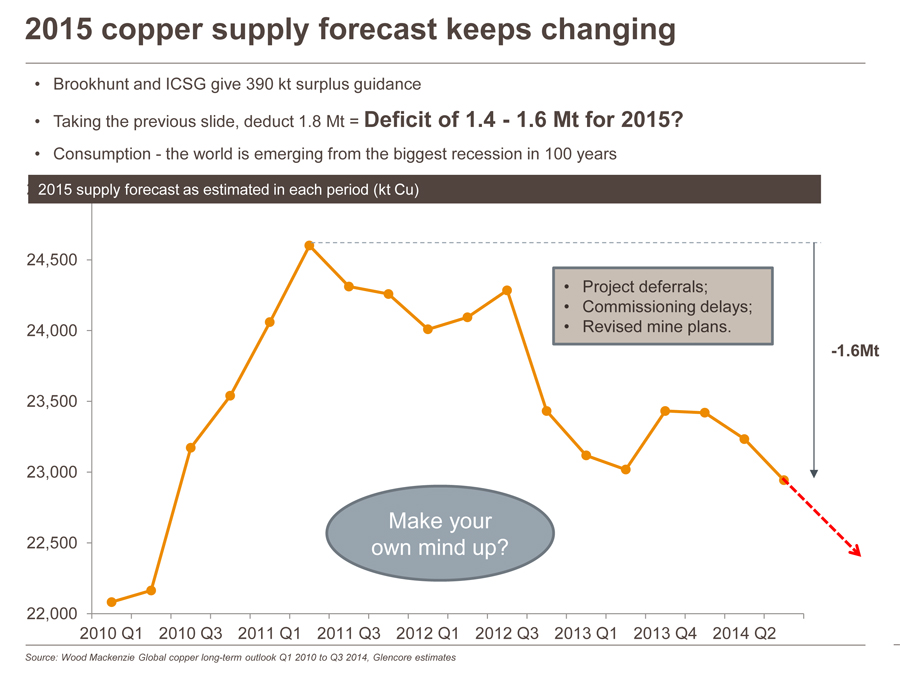Turn a 200kt copper surplus into 1.6mt deficit in 3 easy slides
Glencore says 2015 supply forecasts are way too optimistic and the Swiss giant has the charts and tables to prove it

Tintaya concentrator Peru. Source: Glencore
The copper industry has a long history of supply disruptions.
Typical disruptions associated with adverse weather, technical problems, power shortages or labour activity make forecasting a tough proposition.
To these variables add more recent factors affecting future supply which includes the fall in the price to near four-year lows which makes it difficult for miners to raise development finance (or raise wages for that matter).
That leads to project deferrals, commissioning delays and changes to mine plans and partly explains why the International Copper Study Group’s benchmark forecast for 2014 swung from a 400,000 tonne surplus in April to a 300,000 tonne shortage just six months later.
While there’s consensus for a small deficit this year, in 2015 even the most skeptical of analysts predict an oversupplied market and a concomitant fall in the price.
Not so fast says Telis Mistakidis, Glencore’s copper chief.
Glencore is the world’s third largest global mined copper producer and the world’s largest copper supplier.
The Swiss company relies on copper for 38% of its earnings (vs 20% at BHP Billiton and only 10% at Rio Tinto) so it has a lot riding on the outlook for the red metal.
Glencore’s presentation to investors in London contained these three slides that shows just how vulnerable the copper supply chain can be:

Source: Glencore

Source: Glencore

Source: Glencore
More News
{{ commodity.name }}
{{ post.title }}
{{ post.date }}




Comments
golddigger69
Sure looks like someone was a bit of an optimist (and maybe need a new pair of glasses) when they put the first table together.